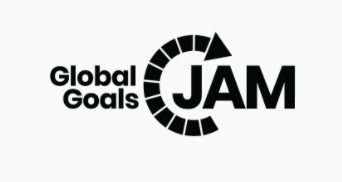- 227
JellyFilm
Team name : どんぶり
Members : Akane Sakaki [Facilitator]
Harumu Yotsuya
Hiromi Nanase
Tamami Togashi
Yuna Miyashiro
Haruka Taniguchi
Souichito Kashiwagi
Challenge : How might we reduce the contact between sea turtles and microplastics?
どうすればウミガメとマイクロプラスチックの接点を少なくできるだろうか?
There is now a major problem with the amount of plastic, especially microplastic, in the ocean. On a global scale, packaging accounts for the majority of plastic waste, which in turn becomes microplastics (through decomposition, etc.). Sea turtles are particularly vulnerable, as microplastics can cause calcium levels in the blood to drop causing weak eggshells. In the worst cases, microplastics can even cause death. These problems have led to a large number of dead sea turtles washing up on the beach.
In response to this fact, Group D examined how to reduce of contact between us, the users of plastic, microplastics and the main character, the sea turtle. Our team's goal is to encourage the elimination of plastic worldwide, and to give us a grace period to reduce the current microplastics in order to prevent the death of sea turtles which die from accidental plastic consumption. The purpose of our idea, JellyFilm, is to replace the majority of the world's plastic with a single sheet of JellyFilm.
JellyFilm is a new packaging alternative to traditional plastics. The name comes from jellyfish, a staple food of sea turtles. Unfortunately, plastics bags are sometimes mistaken for jellyfish by turtles and they accidentally eat them. By using the visual imagery of jellyfish in order product, we are indirectly trying to increase interest in the sea turtles plight.
The constituent material of Jellyfilm is an examinable gel-like oblaat-type of material that could be used not only for normal packaging (labels on cakes and plastic bottles), but also for wrapping, carrying beverages in one's mouth like a water bun, and occasionally for drinking. We believe that JellyFilm, with its flavorable and edible properties, is a system that could work very well as an alternative to solve the global plastic problem, especially in the area of edible packaging.
In the future, we plan to use the café inside the famous Okinawa Churaumi Aquarium to place the edible film (Jellyfilm) around a cake and to offer a new way to ""drink"" JellyFilm. Okinawa, which is a place closely related to sea turtles and sea turtle habitats, would be an appropriate place to take a step toward abolishing plastic and trying out this idea.
JellyFilmは従来のプラスチックに代わる新しい包装方法だ。名前はウミガメの主食で、しばしばビニール袋に間違えられるクラゲ(Jelly Fish)に由来する。あえてクラゲという名前をつけた理由は、ウミガメがビニール袋を誤飲してしまうという深刻な問題に関心を持ってもらうためだ。構成物質は検討可能なゲル状のオブラートに近い形状をしたもので、通常の包装(ケーキやペットボトルのラベル)の用法だけでなく、ラップのような使い方、水まんじゅうのように飲料を口に入れて持ち運んだり、時々飲んだりする使い方が考えられた。世界的なプラスチックの問題、とりわけ包装の問題をクリアするために、味付け可能で食べられるという特性を持つJellyFilmは代替品として大いに機能するだろう。世界中で、プラスチックごみにおける包装用の割合は過半数である。それらがまわりまわって(分解などを通して)マイクロプラスチックになってしまう。特にウミガメの被害は著しく、マイクロプラスチックによって卵殻のための血中カルシウム濃度が下がったり、最悪の場合は死に至ってしまう事もある。海中のプラスチックの量にも問題がある。累計でスカイツリー222基に及ぶとも言われている。これらの要因によって大量の浜に打ち上げられたウミガメの死体を見ることになる。
D班はその事実を受けて、プラスチックの利用者である人間と、マイクロプラスチックと主人公ウミガメの接点を減らすという事を検討した。世界のプラスチックの大部分を占める包装用プラスチックをJellyFilmと代替することで、マイクロプラスチックを減らし、ウミガメの健康に害を及ぼす問題を改善することができると考えた。今後は沖縄美ら海水族館隣のカフェを利用し、ケーキの周りについたフィルムとJellyFilmの交換、JellyFilmを使った新たな飲み物を提供しようと考えている。ウミガメとも縁の深い沖縄なら、プラスチック廃止の一歩を踏み出すのにふさわしいはずだ。
Members : Akane Sakaki [Facilitator]
Harumu Yotsuya
Hiromi Nanase
Tamami Togashi
Yuna Miyashiro
Haruka Taniguchi
Souichito Kashiwagi
Challenge : How might we reduce the contact between sea turtles and microplastics?
どうすればウミガメとマイクロプラスチックの接点を少なくできるだろうか?
There is now a major problem with the amount of plastic, especially microplastic, in the ocean. On a global scale, packaging accounts for the majority of plastic waste, which in turn becomes microplastics (through decomposition, etc.). Sea turtles are particularly vulnerable, as microplastics can cause calcium levels in the blood to drop causing weak eggshells. In the worst cases, microplastics can even cause death. These problems have led to a large number of dead sea turtles washing up on the beach.
In response to this fact, Group D examined how to reduce of contact between us, the users of plastic, microplastics and the main character, the sea turtle. Our team's goal is to encourage the elimination of plastic worldwide, and to give us a grace period to reduce the current microplastics in order to prevent the death of sea turtles which die from accidental plastic consumption. The purpose of our idea, JellyFilm, is to replace the majority of the world's plastic with a single sheet of JellyFilm.
JellyFilm is a new packaging alternative to traditional plastics. The name comes from jellyfish, a staple food of sea turtles. Unfortunately, plastics bags are sometimes mistaken for jellyfish by turtles and they accidentally eat them. By using the visual imagery of jellyfish in order product, we are indirectly trying to increase interest in the sea turtles plight.
The constituent material of Jellyfilm is an examinable gel-like oblaat-type of material that could be used not only for normal packaging (labels on cakes and plastic bottles), but also for wrapping, carrying beverages in one's mouth like a water bun, and occasionally for drinking. We believe that JellyFilm, with its flavorable and edible properties, is a system that could work very well as an alternative to solve the global plastic problem, especially in the area of edible packaging.
In the future, we plan to use the café inside the famous Okinawa Churaumi Aquarium to place the edible film (Jellyfilm) around a cake and to offer a new way to ""drink"" JellyFilm. Okinawa, which is a place closely related to sea turtles and sea turtle habitats, would be an appropriate place to take a step toward abolishing plastic and trying out this idea.
JellyFilmは従来のプラスチックに代わる新しい包装方法だ。名前はウミガメの主食で、しばしばビニール袋に間違えられるクラゲ(Jelly Fish)に由来する。あえてクラゲという名前をつけた理由は、ウミガメがビニール袋を誤飲してしまうという深刻な問題に関心を持ってもらうためだ。構成物質は検討可能なゲル状のオブラートに近い形状をしたもので、通常の包装(ケーキやペットボトルのラベル)の用法だけでなく、ラップのような使い方、水まんじゅうのように飲料を口に入れて持ち運んだり、時々飲んだりする使い方が考えられた。世界的なプラスチックの問題、とりわけ包装の問題をクリアするために、味付け可能で食べられるという特性を持つJellyFilmは代替品として大いに機能するだろう。世界中で、プラスチックごみにおける包装用の割合は過半数である。それらがまわりまわって(分解などを通して)マイクロプラスチックになってしまう。特にウミガメの被害は著しく、マイクロプラスチックによって卵殻のための血中カルシウム濃度が下がったり、最悪の場合は死に至ってしまう事もある。海中のプラスチックの量にも問題がある。累計でスカイツリー222基に及ぶとも言われている。これらの要因によって大量の浜に打ち上げられたウミガメの死体を見ることになる。
D班はその事実を受けて、プラスチックの利用者である人間と、マイクロプラスチックと主人公ウミガメの接点を減らすという事を検討した。世界のプラスチックの大部分を占める包装用プラスチックをJellyFilmと代替することで、マイクロプラスチックを減らし、ウミガメの健康に害を及ぼす問題を改善することができると考えた。今後は沖縄美ら海水族館隣のカフェを利用し、ケーキの周りについたフィルムとJellyFilmの交換、JellyFilmを使った新たな飲み物を提供しようと考えている。ウミガメとも縁の深い沖縄なら、プラスチック廃止の一歩を踏み出すのにふさわしいはずだ。


